Endeavor Research Private Ltd successfully hosted the Webinar on Material Science during December 03-04, 2020. The webinar was successful in gathering eminent speakers from various reputed organizations and their paramount talks enlightened the gathering..
The pragmatic meet organized by Endeavor Research Private Ltd received generous response from Industrialists, Academia, Talented Researchers and Young Student Community. Industrialists, Researchers and Students who attended from different parts of the world made the webinar one of the most successful events from the Endeavor.
The scientific program paves a way to gather visionaries through the research talks and presentations and put forward many thought provoking strategies.
Scientific sessions covered in the webinar i.e. Materials Science and Engineering | Bio Materials and Medical Devices | Advanced Nanomaterials | Physics and Chemistry of Materials | Functional materials | Ceramics, Glasses & Composite Materials | Electrical, Optical, and Magnetic Materials | Bio Materials and Medical Devices | Polymers Science & Nano Engineering | Computational Modeling of Metals & Materials | Surfaces, Coatings and Films | Mining, Metallurgy and Materials Science | Advanced Energy Materials | Applications in Material Science Engineering | Fibers and Composites | Graphene and 2D Materials | Emerging Smart Materials | Catalysis and Chemical Reactions | Aerospace, Mechanical and Civil Engineering
The webinar was marked with the presence of renowned Speakers, Young Researchers, Students and Business Delegates driving the two day event into the path of success with thought provoking keynote and oral presentations.
Advisory Board Member
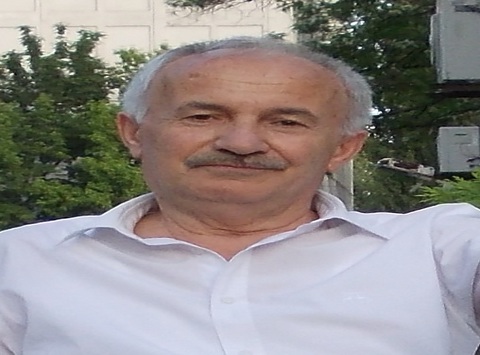
Prof. Osman Adiguzel
Firat University, Department of Physics, Elazig, Turkey
Dr. Osman Adiguzel graduated from Department of Physics, Ankara University, Turkey in 1974 and received PhD- degree from Dicle University, Diyarbakir-Turkey. He studied at Surrey University, Guildford, UK, as a post doctoral research scientist in 1986-1987, and his studies focused on shape memory alloys. He worked as research assistant, 1975-80, at Dicle University and shifted to Firat University in 1980. He became professor in 1996, and he has been retired due to the age limit of 67; following academic life of 45 years.
He published over 60 papers in international and national journals; He joined over 100 conferences and symposia in international and national level as participant, invited speaker or keynote speaker with contributions. He served the program chair or conference chair/co-chair in some of these activities. In particular, he joined in last six years (2014 - 2019) over 60 conferences as Speaker, Keynote Speaker and Conference Co-Chair organized by South Asian Institute of Science and Engineering (SAISE), web: http://saise.org/, Science and Engineering Institute (SCIEI), web: http://www.sciei.org, International Association of Computer Science and Information Technology, web: http://www.iacsit.org/, Scientific Federation, web: https://scientificfederation.com/, IASED, web: http://www.iased.org/ , The Academic World Education and Research Center (AWER-Center), web: http://www.awer-center.org/, and other institutes and companies.
Dr. Adiguzel served his directorate of Graduate School of Natural and Applied Sciences, Firat University in 1999-2004. He supervised 5 PhD- theses and 3 M.Sc theses. He is also Technical committee member of many conferences. He received a certificate which is being awarded to him and his experimental group in recognition of significant contribution of 2 patterns to the Powder Diffraction File – Release 2000. The ICDD (International Centre for Diffraction Data) also appreciates cooperation of his group and interest in Powder Diffraction File.
Scientific fields of Dr. Adiguzel are as follow: Shape memory effect and displacive phase transformations in shape memory alloys and other alloys, molecular dynamics simulations, alloy modeling, electron microscopy, electron diffraction, x-ray diffraction and crystallography.
Shape memory effect is a peculiar property exhibited by a certain alloy systems in the β-phase fields, and result of thermal and mechanical treatments. These alloys have dual characteristics called thermoelasticity and superelasticity, governed by dual thermal and stress induced martensitic transformations, and performed thermally and mechanically, respectively. Thermal induced transformation occurs along with lattice twinning on cooling and ordered parent phase structures turn into twinned martensite structures. Twinned structures turn into detwinned martensite structures by means of stress induced transformation by the deformation of material in martensitic condition. The materials recover original shape on heating after these treatments in bulk level, and cycles between original and deformed shapes on heating and cooling, respectively. Superelasticity is also a result of stress induced martensitic transformation and performed in only mechanical manner in the parent austenite phase region. The materials are deformed just over Austenite finish temperature, and shape recovery is performed simultaneously upon releasing the applied stress. The ordered parent phase structures turn into the detwinned structures by means of stress induced martensitic transformation. Superelasticity is performed in non-linear way, unlike normal elastic materials, loading and unloading paths in stress-strain diagram are different, and hysteresis loop reveals energy dissipation. Deformation at different temperatures in intermediate region between Martensite start and Austenite finish temperatures exhibits different behavior beyond shape memory effect and superelasticity. Thermal induced martensitic transformation occurs with the cooperative movement of atoms in two opposite directions, <110 > -type directions on {110}-type planes of austenite matrix, by means of shear-like mechanism.
Copper based alloys exhibit this property in metastable β-phase region, which has bcc-based structures. Lattice invariant shears are not uniform in copper based shape memory alloys, and the ordered parent phase structures martensitically undergo the non-conventional complex layered structures. The long-period layered structures can be described by different unit cells as 3R, 9R or 18R depending on the stacking sequences on the close-packed planes of the ordered lattice. The unit cell and periodicity is completed through 18 layers in direction z, in case of 18R martensite, and unit cells are not periodic in short range in direction z.
In the present contribution, x-ray diffraction and transmission electron microscopy studies were carried out on two copper based CuZnAl and CuAlMn alloys. X-ray diffraction profiles and electron diffraction patterns exhibit super lattice reflections inherited from parent phase due to the displacive character of martensitic transformation. X-ray diffractograms taken in a long time interval show that diffraction angles and intensities of diffraction peaks change with the aging time at room temperature. This result refers to a new transformation in diffusive manner.
Advisory Board Member

Prof. Raman Singh
Monash University, Australia
Professor Raman Singh’s expertise includes: Alloy Nano/Microstructure-Corrosion Relationship, Stress Corrosion Cracking (SCC), Corrosion/SCC of Biomaterials, Corrosion Mitigation by Novel Material (e.g., Graphene), Advanced and Environmentally Friendly Coatings, High Temperature Corrosion. He has supervised 50 PhD students. He has published over 225 peer-reviewed international journal publications, 15 books/book chapters and over 100 reviewed conference publications. His professional responsibilities include editor-in-chief of two journals, Fellow ASM International and Engineers Australia, over 40 keynote/plenary talks at international conferences (besides numerous invited talks), leadership (as chairperson) of a few international conferences.
Corrosion and its mitigation costs dearly (any developed economy loses 3-4% of GDP due to corrosion, which translates to ~$250b to annual loss USA). In spite of traditional approaches of corrosion mitigation (e.g., use of corrosion resistance alloys such as stainless steels and coatings), loss of infrastructure due to corrosion continues to be a vexing problem. So, it is technologically as well as commercially attractive to explore disruptive approaches for durable corrosion resistance.
Graphene has triggered unprecedented research excitement for its exceptional characteristics. The most relevant properties of graphene as corrosion resistance barrier are its remarkable chemical inertness, impermeability and toughness, i.e., the requirements of an ideal surface barrier coating for corrosion resistance. However, the extent of corrosion resistance has been found to vary considerably in different studies. The author’s group has demonstrated an ultra-thin graphene coating to improve corrosion resistance of copper by two orders of magnitude in an aggressive chloride solution (i.e., similar to sea-water). In contrast, other reports suggest the graphene coating to actually enhance corrosion rate of copper, particularly during extended exposures. Authors group has investigated the reasons for such contrast in corrosion resistance due to graphene coating as reported by different researchers. On the basis of the findings, author’s group has succeeded in demonstration of durable corrosion resistance as result of development of suitable graphene coating. The presentation will also assess the challenges in developing corrosion resistant graphene coating on most common engineering alloys, such as mild steel, and presents results demonstrating circumvention of these challenges.
Keynote Speaker
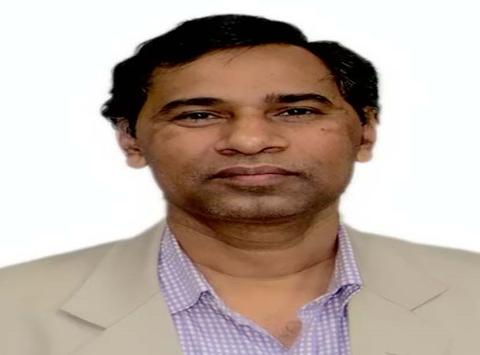
Prof. Satyabrata Jit
Department of Electronics Engineering, Indian Institute of Technology (BHU), Varanasi, India
Prof. Satyabrata Jit has earned his B.E., M.Tech. and Ph.D. degrees from the IIEST Shibpore (formerly BE College affiliated to the University of Calcutta), West Bengal in 1993; Indian Institute of Technology Kanpur, India in 1995; and Indian Institute of Technology (BHU) (formerly IT-BHU)), Varanasi, India in 2002 respectively. He has served as Lecturer at the Department of Electronics and Communication Engineering of the G.B. Pant Institute of Engineering and Technology (formerly G.B.Pant Engineering College), Pauri-Garhwal during June 1995-April 1998. He joined the Department of Electronics Engineering, IIT(BHU), Varanasi as Lecturer in April 1998 where he has been working as Professor since June 2010.
Prof. Jit has supervised 21 Ph.D. theses and has published more than 270 papers in various peer reviewed international journals and conference proceedings including 50 IEEE publications.
The lecture will address the fabrication and characterization of some colloidal ZnO quantum dots (QDs) based spectrum selective photodetectors. The monodisperse ZnO QDs with particle sizes of ~2.87 nm and standard deviation <5% have been synthesized using hot-injection based colloidal nano-synthesis approach. Thin films of ZnO QDs are deposited by spin coating technique for device fabrication. The spin-coated films are annealed in a ambient environment for improving the quality of the films. The effect of annealing temperature on the optical absorption properties of the films has been studied. The bandgap of ZnO QDs is decreased from 3.231 eV to 3.136 eV when the annealing temperature is increased from 450°C to 600°C at the ambient environment. The annealed ZnO QDs film at 450 oC is used for fabricating and characterizing three spectrum selective photdetector structures: Au/ZnO QDs/Si Schottky diode, Glass/ZnO QDs/Ag based photocondctutor and Glass/ZnO QDs/Ag/ZnO Nanoparticles (NPs) based photodetector with a interdigitated electrode structure. The electrical and optical characterics of the aforementioned devices have been analyzed. Glass/ZnO QDs/Ag/ZnO Nanoparticles (NPs) is shown to possess larger responsivity over Glass/ZnO QDs/Ag structure under back illumination through the glass substrate while maintaining nearly similar spectral selective characteristics. The scattering of light from the additional ZnO NPs layer over the Ag interdigitated electrode is shown to improve the responsivity of the device under back illumination. Various parameters such as the dark current, photocurrent, contrast ratio, responsivity, FWHM, rise-time and fall-time of the proposed photodetectors have been measured.
Keynote Speaker
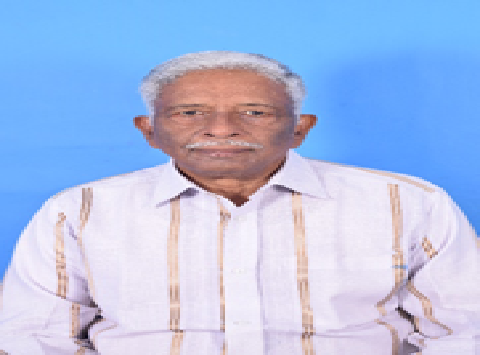
Dr. Nalllani Satyanarayana
Pondicherry University Pondicherry, India
Dr. N. Satyanarayana gratefully acknowledges UGC, Govt. of India for awarding UGC-BSR Faculty fellowship: No. F.18-1/2011(BSR), Date: 07-03-2019. Author is also gratefully acknowledged DST, CSIR, DRDO, BRFST, BRNS, ACITE and UGC, Government of India, for financial support in the form of major research projects grants.
Recently, there is a great demand for developing renewable and pollution free energy sources due to the disadvantages, like pollution and nonrenewable, of abundantly contributing energy sources of fossil fuels like coal, oil and natural gas. Among the available renewable energy sources, sunlight provides the largest and one hour of sunshine yield energy is sufficient for the whole year of global energy needs. So, sunlight is the ultimate solution for our energy needs as it is clean, abundant, and renewable energy resource. A solar cell is an electrical device that converts the energy of light directly into electricity by the photovoltaic effect. Among the available, dye sensitized solar cells (DSSCs) are one class of the third generation photovoltaic devices. Wide range of materials, useful as photoanodes, photosensitized dyes, electrolytes as redox couples and cathodes, have been developed and investigated for improving the efficiency of the dye sensitized solar cells. Recently, nanostructured materials are found to be better candidates than their respective bulk counterparts. Synthesis processes play major role in the development of nanostructured materials with desired physiochemical properties. Many Physical and wet chemical routes are used for this purpose. Among the available, electrospinning technique has many advantages for developing one dimensional nanofibers. Hence, using electrospinning technique, we focus on developing one dimensional nanofibers materials useful as photoanodes as well as electrolytes as redox couples for developing better photovoltaic efficiency of dye sensitized solar cells applications.
First, it will be reviewed briefly about various types of energy sources as well as renewable energy sources with special emphasis on dye sensitized solar cells. Also, it will be briefly discussed about the working principle as well as the various components and their properties of the dye sensitized solar cells. Later, it will be discussed about the electrospinning technique for the preparation of various types of one dimensional nanofibers materials useful as photoanodes as well as electrolytes as redox couples for developing better photovoltaic efficiency of dye sensitized solar cells applications. Finally, it will be discussed about the fabrication and characterization of the dye sensitized solar cells using the developed one dimensional nanofibers materials as photoanodes as well as electrolytes as redox couples.
Keynote Speaker
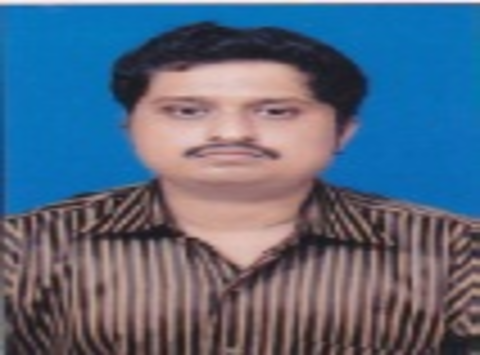
Dr. Tanmoy Chakraborty
Department of Chemistry and Biochemistry, Sharda University, India
Dr. Tanmoy Chakraborty obtained his PhD (Theoretical and Computational Chemistry) from the University of Kalyani, India. He is presently serving as Associate Professor, Department of Chemistry and Biochemistry, School of Basic Sciences and Research, Sharda University. He has been working in the challenging field of computational and theoretical chemistry since last 14 years. Dr Chakraborty has published a total 48 research papers till date in peer-reviewed reputed international journals. He has edited a number of research books and written a few book chapters with international reputed publishing houses. He served as an International Editorial Board Member of the International Journal of Chemoinformatics and Chemical Engineering, IGI Global, USA. Presently, he is performing as the Guest Lead Editor of the special issue of Theoretical Chemistry Accounts, Springer. Dr. Chakraborty is the recipient of the prestigious Paromeswar Mallik Smawarak Padak , from Hooghly Mohsin College (University of Burdwan) in 2002.
A quest of new materials and its real field applications is an active field of research. Computational study of structure and properties of materials and an effort to make correlation between experimental properties and theoretical counterparts has made a paradigm shift in this research domain. Bi-metallic nano alloy clusters have gained a huge attraction due to its diverse applications. We have made an extensive study of some bi-metallic clusters invoking Density Functional Theory (DFT). Our analysis plays a pivotal role to explain several structural aspects and stability of the clusters. In addition experimental properties of the bi-metallic clusters have been interpreted in terms of Conceptual Density Functional Theory Based global descriptors. We may use our computed data to model the new compounds with desired properties.
Scientific Session Speaker
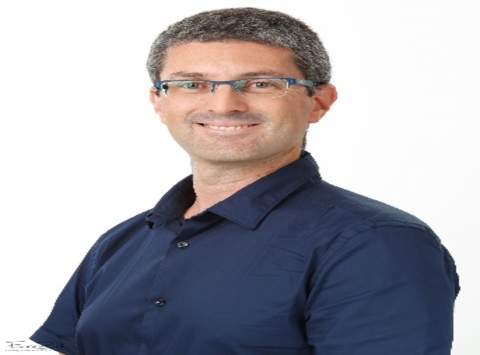
Dr. Ran Y. Suckeveriene
Department of Water Industry engineering, Kinneret Academic College, Zemach, Israel
Dr. Suckeveriene received his Ph.D. in Polymer Engineering (2012), Post-doc (2013), M.Sc. (2008) and B.Sc. (2005) degrees in Chemical Engineering, all from the Technion – Israeli Institute of Technology. Ran has published more than 30 academic articles and three patents. Also, ran is an editor and reviewer for several journals.
Dr. Suckeveriene is a faculty member and group leader, of the Laboratory of Polymers, Composites, and Nanocomposites at Kinneret Academic College on the Sea of Galilee in the Water Industry Engineering Department, specialized on polymers, composites and nanocomposites, including the preparation and characterization of such materials. He is also the CTO of Kinneret Agrotech Innovation Center, and the CTO of Obvislim startup.
Dr. Ran Suckeveriene have vast experience in chemical engineering and processes, different polymerization techniques, compounding equipment (batch and continuous techniques), morphology characterization and polymer characterization methods, such as TGA, DSC, rotational and capillary rheology, Instron, DMTA, electrical measurements, etc.
The demand for clean water is ever growing; however, since water sources are limited, the need for purification processes, such as membranes and filters, is increasing. One of the main problems for these elements is fouling and biofouling. In general, fouling is related to deposition of macromolecules, colloids, particles and inorganic materials on the membrane surface and pores. Biofouling consists of the deposition of large bacterial colonies and biofilm on the membrane surface and inside the pores. Both depositions are difficult to clean effectively. Anti-biofouling additives activity is usually limited, since they need to be stable under water current and located at the surfaces of the membranes or filters. One of the suggested routes for biofouling prevention is the use of electrically conductive polymers (ICP).
This work describes an in-situ inverse emulsion polymerization method of aniline in the presence of commercial reverse osmosis (RO) membranes, in organic solvents using ultrasonication. The resulted polyaniline (PANI) chains are grafted to the membrane surface, creating an anti-biofouling coating. High-resolution scanning electron microscopy (HRSEM) has shown that commercial RO membranes are coated with PANI. The grafted PANI exhibited a remarkably improved anti-biofouling effect. The membranes salts rejection and flow properties were studied. Flow properties were slightly different compared with the reference membrane.
Scientific Session Speaker
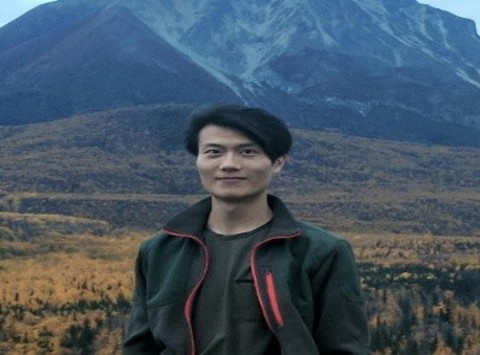
Dr. Haiming Deng
The City College of New York, USA
Haiming Deng obtained his BS (Physics) from the The City College of New York and MS from Stony Brook University. His PhD research is based on magnetic Topological Insulators. His area of interest is quantum materials, superconductivities, emerging topological effects and complex particle correlations. He has published various papers in peer reviewed journals.
The quantum anomalous Hall effect is a fundamental transport response of a topological insulator in zero magnetic field. Its physical origin is a result of an intrinsically inverted electronic band structure and ferromagnetism, and its most important manifestation is the dissipationless flow of chiral charge currents at the edges of the system, a property that has the potential to transform future quantum electronics. Here, we report a Berry-curvature-driven anomalous Hall regime at temperatures of several Kelvin in the magnetic topological bulk crystals in which Mn ions self-organize into a period-ordered MnBi2Te4/Bi2Te3 superlattice. Robust ferromagnetism of the MnBi2Te4 monolayers opens a surface gap, and when the Fermi level is tuned to be within this gap, the anomalous Hall conductance reaches an e2/h quantization plateau, which is a clear indication of chiral transport through the edge states. The quantization in this regime is not obstructed by the bulk conduction channels and therefore should be present in a broad family of topological magnets.
Reference: Deng, Haiming, Chen, Z., Wołoś, A. et al. High-temperature quantum anomalous Hall regime in a MnBi2Te4/Bi2Te3 superlattice. Nat. Phys. (2020). https://doi.org/10.1038/s41567-020-0998-2
Scientific Session Speaker
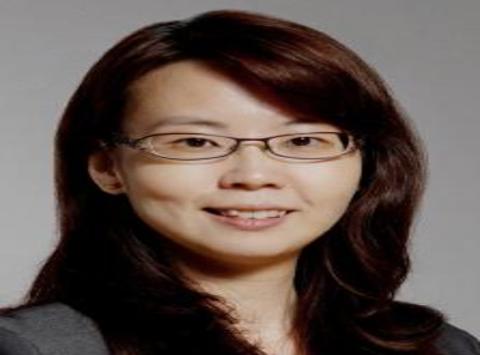
Dr. Lu Shen
Singapore Institute of Technology, Singapore
Dr Shen Lu graduated with a Master Degree in Mechanical and Production Engineering in 2000 and furthered her study in Material Science and Engineering and obtained Ph.D Degree in 2014 from Nanyang Technological University. She is the Lead Professional officer at Singapore Institute of Technology and the Co-chair of Applied Research Committee driving and coordinating the Division’s efforts in industry facing and innovation projects. Dr Shen Lu is currently supporting Engineering laboratory modules and is the academic supervisor of Civil Engineering students for the Integrated Work Study Programme. Prior to joining SIT, Dr Shen Lu was the Department Head of Nanofabrication and Characterisation Facilities at Agency for Science Technology and Research (A*STAR). The department was then supporting materials characterisation and fabrication needs across A*STAR Institutes. The facilities and consultancy services also extended to support small and medium enterprises (SMEs) and Higher Learning Institutions in developing materials knowledge and fabrication know-how.
Tooth enamel has an important mechanical function for human dental health, yet characterizing its mechanical properties is not trivial due to its complex nanoporous structures. The study uses nanoindentation to examine the mechanical properties of enamel across the lingual-buccal enamel cross-section. Three zones were identified across the enamel thickness and delineated according to the distribution of mechanical properties. The surface and the area underneath the nanoindent were analyzed by Scanning Electron Microscopy, Focused Ion Beam imaging, and Transmission Electron Microscopy. Mechanical and microscopy evidence of what occurs within the inner, medium and outer layers of enamel following nanoindentation were compared and analysed in the study. The deformation characteristics of enamel was location dependent and influenced by changes in the chemical composition within enamel. The deformation at the enamel-dentin-junction (EDJ) is characterized as ductile due to the increased organic phase at the interface. At the intermediate enamel region, intra-rod cracks were formed at the center of enamel rods and propagated into the neighboring inter-rod region at deviated directions along the orientation of the local crystallites. At the outer enamel layer, crack propagation was constrained by the rigid structure surrounding the indented site. Most of the cracks were formed close to the surface. A significant amount of material was also pushed upwards and delaminated from the enamel surface around the indentation area.
Scientific Session Speaker
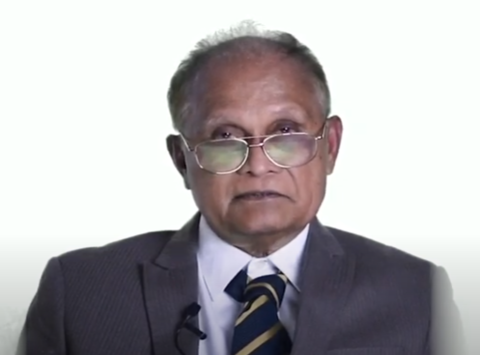
Dr. E. E. Escultura
JNT University Kakinada, Vishakhapatnan, India
Research Professor (Honorary), GVP-Professor V. Lakshmikantham Institute for Advanced Studies GVP College of Engineering, JNT University Kakinada, Vishakhapatnam, India
This Paper is a sequel to E. E. Escultura, Technological Applications of the Grand Unified Theory (GUT), Advances in Social Science Research Journal, 5(9), 2018, 146 – 164. The foundations of technology for electromagnetic treatment of genetic and infectious diseases are natural laws discovered in the course of developing GUT and its extensions, namely, the unified theory of evolution and the new neuroscience. They belong to the new science because they were built on natural laws using the new methodology of science, qualitative mathematics and modeling. The first part is an overview of GUT which includes definition of physical concepts in the new sense based on natural laws most of which unknown in traditional science, i.e., all of science before the application of qualitative mathematics and modeling to solve the gravitational n-body problem in 1997. The second part discusses the new biology and neuroscience in detail and states the biological laws and laws of thought. They discuss concepts that are unknown in traditional biology and neuroscience such as dark matter, superstring and brain waves as the medium of the brain and genome for carrying out their functions. The main function of the brain is to serve as the control center and coordinator of all body motion and processes. Its secondary function is thought. The main function of the genome is to reconstitute the prima (elementary particles), atoms and molecules coming from the metabolized food in the digestive system into the tissues and chemicals of the body. Its secondary function is to pass on the genetic code to the offspring in reproduction. The paper also resolves outstanding issues in science such as wave-particle duality in physics and the so-called “missing link” in evolution because they have some bearing on the new science and technology. They are intended for multidisciplinary researchers and new researchers curious about new ideas. There are other materials here of interest to the readership. The last part is conceptualization of research and development towards design and forging of the of appropriate technologies for treatment of genetic and infectious diseases.
Keywords.
Brain Wave, Cognition, Dendrite, Gene Radiation, Genome, Mutation, Stem Cell, Virus.
________________________
1. Introduction
There are two types of technology discussed here. One type treats genetic and infectious diseases without side effect using electromagnetic waves. The other type is therapy for avoiding dementia. Both types of technology are designed based on the new methodology of science: to solve a physical problem one constructs a physical theory that provides the solution. Designing a piece of technology that does a particular task like treating a disease is a physical problem. The underlying physical theories of the first type are the grand unified theory (GUT) [1] and its extensions [2,3]. GUT alone has given rise to several types of technology called GUT technologies [4].
The underlying physical theory of the second type of technology is the physics of intelligence [5] supported by [6] which explain the physical processes in the brain involved in the formation of concepts, retention o concepts (memory) and recollection. A physical theory is a mathematical space where the basic premises or axioms are laws of nature. The natural laws that build up GUT and its extensions are found in [1-3]. They are unknown in traditional science, i.e., all of science up to 1997. Traditional science is built by the method of computation and measurement which describes the appearances of nature or natural phenomena mathematically, e.g., by differential equations. It uses reasoning by analogy. In contrast the mathematical component of this new methodology called qualitative mathematics and modeling explains natural phenomena and how nature works. Qualitative mathematics is the mathematical model of rational thought [6] and the complement of measurement and computation introduced in and the main contribution of [7]. Reasoning is deductive based on natural laws. Its greater capability is attested by the fact that it has resolved long standing problems in mathematics that the traditional method could not such as Fermat’s last theorem (FLT) [8] and Goldbach’s conjecture [9]. The resolution of FLT is a counterexample that proves it false [10]. Traditional science ended in 1997 when the new methodology was applied to physics for the first time to solve the gravitational n-body problem [11].
2. Physical Concepts and Natural Laws
Most of the physical concepts in this paper are either unknown or ill-defined in traditional science and the natural laws are either unknown or undefined there and stated in the new sense. The only known natural laws in traditional science are Newton’s three laws of motion [12], his universal law of gravitation [13] and the laws of thermodynamics [14]. The universal law of gravitation that says,
“Every particle attracts every other particle in our universe and the force of attraction between two particles is proportional to the product of their masses and inversely proportional to the square of the distance between them,”
is false according to [1]. It is only true within a cosmological vortex. For instance, there is no attraction between an atom in Andromeda and an atom in the Milky Way because they are independent cosmological vortices. Of course, the concept cosmological vortex is unknown in traditional science. The reason there is need for precision in the application of a theory is any error can lead to disastrous consequences as the final flight of the Columbia Space Shuttle [3] showed.
Below is the fundamental natural law, fundamental in the sense that all other natural laws are consistent with or expressions of it.
Energy Conservation Law. In any physical system and its interaction, the sum of kinetic (visible) and latent (dark) energy is constant, gain of energy is maximal and loss of energy is minimal.
This law is a generalization and an extension of the first law of thermodynamics to dark matter. The next natural law identifies various expressions of Energy Conservation.
Energy Conservation Equivalence Law. Energy conservation has many expressions or forms: order, symmetry, economy, least action, optimality, efficiency, stability, self-similarity (nested fractal), coherence, resonance, quantization, synchronization, smoothness, uniformity, motion-symmetry balance, non-redundancy, non-extravagance, evolution to infinitesimal configuration, helical and related configuration such as circular, spiral, sinusoidal and a loop, in biology, genetic encoding of characteristics, reproduction and order in diversity and complexity of functions and configuration that provides optimal capability.
Each component of this law is either a mathematical principle or a physical principle. The existence, structure, properties and behavior of every physical concept are assured and defined by natural laws. Abstract concepts including mathematical concepts as well as physical concepts are created by thought but only physical concepts have referents in the real world, e.g., atom, star; abstract concepts have none, e.g., time, distance. Time is created by thought to describe relation between two events and distance between two objects. They do not exist in the real world.
Some physical concepts are partially defined below until they are fully defined by natural laws. Energy is motion of matter; therefore, they are never separate and anything that has energy, e.g., photon, has mass and vice versa. Wave is suitably synchronized sequence of resolution of contending forces in the medium, i.e., suitably synchronized vibration of the medium. Therefore, wave does not exist in empty space and the fact that there are electromagnetic waves in the cosmos proves the existence of a medium. That medium is what we call dark matter. Therefore, dark matter exists and the question, what comprises dark matter is valid and the answer is: the non-agitated superstring which is not directly observable but known only by its impact on visible matter. Dark matter is one of the two fundamental states of matter, the other ordinary or visible matter. One effect of dark matter is the steady formation of dust clouds in the cosmos that congeal into stars at a rate that varies across regions from a few stars to 1,000 stars every million years [15]. There are regions in the cosmos called star nurseries where stars form rapidly [16,17]. Since matter has mass (a measure of the amount of matter in it), it cannot travel over long distances (Energy Conservation) without a carrier and that carrier is electromagnetic wave; its energy sustains its flight (E = fu. where E is energy in SI unit, f is frequency and u is wavelength).
For insight, consider water wave. It is generated at a point on the surface, say, by dropping a piece of rock on a pool. It pushes the water molecules down the surface. Water pressure pushes them up to the surface (due to the impact of Brownian motion) and beyond the surface due to momentum. Gravity pulls them down, again, below the surface due to momentum, etc., resulting in vibration of the water molecules in place. The vibration resonates with surrounding molecules propagating it radially along concentric circles in all directions in accordance with the Resonance Law [19]. The wave vanishes when the energy imparted by the falling rock that generated and propelled it has dissipated.
Electromagnetic wave, one of the two types of cosmic waves (the other seismic waves) [19], is generated by the natural vibration of an atomic nucleus; it is propagated across dark matter over long distances (across our galaxies unless scattered by malleable materials). Nuclear vibration is due to the impact of cosmic waves, mainly, electromagnetic waves coming from all directions its characteristics determined by its nuclear structure in accordance with the following natural law:
Internal-External Factor Dichotomy Law. The interaction, dynamics and physical characteristics of a physical system are shaped by internal and external factors; in general, the internal factor is principal over the external and the latter works through the former.
It follows that every piece of matter vibrates due to the impact of electromagnetic waves.
Flux is motion of matter with direction at each point, e.g., water current, wind flow. Turbulence is coherent flux, e.g., typhoon, sound wave, tornado. Chaos is mixture of order none of which is identifiable. For example, at the onset of a hurricane air molecules rush by the trillions towards tropical depression; the motion of a molecule cannot be predicted due to the immensity of the quantity of rushing molecules and collisions (uncertainty of large number [15] and Heisenberg’s uncertainty principle [20]). However, every molecule is subject to natural laws that define order. It follows that our universe is a turbulence; in fact, it is a nested generalized physical fractal sequence of vortices of non-agitated superstrings with our universe as the common first term down through the galaxies, stars, planets, moons, cosmic dust [21], atoms, prima and superstrings [22,23].
The next natural law [1] was inspired by a high school experiment many years ago.
Flux-Low-Pressure Complementarity Law. Low pressure sucks matter around it and the initial rush of matter towards a region of low pressure stabilizes into local turbulence, e.g., vortex flux; conversely, coherent flux induces low pressure around it.
The next natural law is central to primal and cosmological interactions. Its broad form follows.
Flux Compatibility*. Two fluxes of the same direction attract but two fluxes of opposite directions repel each other.
Both Flux-Low-Pressure Complementarity Law and Flux Compatibility* are central to superstring interaction. The next natural law [24] is particularly important in designing the technology to be introduced here.
Resonance and Superposition Law. Two waves of the same order of magnitude have maximum resonance when they have exactly the same characteristics and the principal determinant of level of resonance is wavelength or frequency the secondary determinant amplitude variation; when two waves of different characteristics resonate with each other their wave characteristics superpose on each other and form composite wave.
This natural law has practical application in the design of a silencer and treatment of diseases.
3. The Superstring
The tissues of the human body are, ultimately, made up of superstrings. That is why it is important to know the superstring completely, especially, its structure. The principal reason it took several centuries to discover the fundamental building block of matter was the failure to recognize a critical requirement: indestructibility. Otherwise, our universe would have collapsed long ago; it did not and has existed for 8 billion years (corrected value [1]). In turn, indestructibility required the superstring to be nested generalized physical fractal sequence [25] which is taken as a natural law as follows:
Existence of the Fundamental Building Block of Matter and Its nested Generalized Physical Fractal Sequence Structure. The fundamental building block of dark matter is the non-agitated superstring, a circular helical loop and nested fractal sequence of superstrings (toroidal fluxes), with itself as first term; each toroidal flux in the sequence, except the first term, is a superstring having toroidal flux, a superstring, traveling at 7(1022) cm/sec [26] through its cycles; each toroidal flux in the sequence, except the first term, is a superstring having toroidal flux, a superstring, traveling at 7(1022) cm/sec through its cycles;… Each superstring except the first, is contained in and self-similar to the preceding term in structure, behavior and properties.
The structure defined by this natural law is articulated by [27]. The first term of the fractal sequence looks like a lady’s spring bracelet (Figure 1). It is this structure that makes the superstring indestructible. For, since the sequence has no last element, when hit by an electromagnetic wave only the first term of the fractal superstring may break leaving the toroidal flux, which is a dark superstring, intact. The indestructibility of the superstring makes our universe stable. Indeed, it has existed for 8 billion years [1].

Figure 1: The circular, helical toroidal superstring (which looks like a lady’s spring bracelet); its dark toroidal flux, a superstring, travels through its cycles at 7(1022) cm/sec. (Figure from [28])§
By the quantization and synchronization principles, this speed of 7(1022) cm/sec is a constant of nature, e.g., speed of electric current. A superstring is non-agitated if its cycle length (CL) is less than 10-16 meters, semi agitated if 10-16 < CL < 10-14 meters and agitated if a segment has CL > 10-14 meters. We summarize our findings as a natural law.
Dark-to-Visible-Matter Conversion. When electromagnetic wave hits a semi-agitated superstring one of these may occur: (a) the outer superstring breaks, its toroidal flux remaining non-agitated superstring; (b) a segment bulges into a primum, an agitated superstring and a unit of visible matter.
This is an important natural law because it establishes the precise relationship between dark and visible matter. It follows from the indestructibility of the superstring that the Universe of dark matter has no beginning and no end (timeless). Moreover, by Flux-Low-Pressure Complementarity, it has no boundary, i.e., unbounded and infinite and our universe is a finite local bubble in it among other universes [29,30]. This does not rule out the existence of infinite and unbounded set of local finite universes. A physical system is observable through the medium of light if its size is at least equal to the wavelength of visible light; this follows from the Resonance Law [3]. Thus, a semi- or non-agitated superstring is not observable its cycle length being less than the finest wavelength of visible light in order of magnitude, 10-14 meters. What really is a primum? When the toroidal flux along its cycles is hit by cosmic waves coming from all directions it is thrown into erratic motion and collides with other superstrings turning it into a spike with the centroid traveling through the cycles at 7(1022) cm/sec. It pulls the superstrings around the primum (Flux-Low-Pressure Complementarity) into its induced vortex flux (vortex flux for short) with axis coinciding with the axis of the primum inside the cylindrical eye making it a magnet, polarity in accordance with the righthand rule of electromagnetism (Figure 2).
The vortex flux is counter-clockwise for a positive primum, by convention, negative otherwise. The plane that passes through the apex of its profile and normal to its axis is the equatorial plane its intersection with the primum the equator. The vortex flux manifests itself as charge. The unit of charge is the electron’s charge: -1 (1.6(10-19) coulombs). The electron, +quark and -quark having charges -1, +2/3 and -1/3 [31], respectively, are basic prima because they comprise every atom. Seismic waves generated by the micro component of turbulence at its interface in the spinning core of a cosmological vortex [19] also convert dark to visible matter in and around it at staggering rate. The primum’s toroidal and vortex flux and natural vibration of dark matter endow dark matter huge latent energy partially convertible to kinetic energy. The latent energy density of dark matter is 1026 joules/cubic ft. according to de Broglie [32], 8(108) volts/cm says Seike Jr. [32] and the equivalent of 18 kg/cu meter according to Gerlovin [31] using relativistic conversion.

Figure 2: A simple primum, bulged segment of a semi-agitated superstring. Its toroidal flux pulls and spins the non-agitated superstrings around it (by Resonance and Flux-Low-Pressure Complementary) into its magnetic flux. Its polarity conforming to the righthand-rule of electromagnetism: when the index finger points in the direction of its toroidal flux, the thumb points to the north pole. (Figure from [28])§.
The next natural law is a special form of Flux Compatibility* that applies to vortex fluxes of superstrings in quantum and macro gravity directly.
Flux Compatibility. Two prima of opposite toroidal flux spins attract at their equators but repel at their poles; otherwise, they repel at their equators but attract at their poles. Two prima of same toroidal flux spin connect equatorially only through a primum of opposite toroidal flux spin between them called connector.
This natural law is the basis for making a magnet [32].
Primal Interaction
Primal interaction is governed by Flux Compatibility and Flux-Low-Pressure Complementarity. The proton consists of two +quarks joined by a -quark at their rims, by Flux Compatibility (Figure 3), their axis coplanar, by Energy Conservation. Therefore, the charge of the proton is: 2/3 – 1/3 + 1/3 = 1. Thus, the proton has counter-clockwise vortex flux spin.
The neutron is a composite of a proton, an electron and a neutrino. By Flux Compatibility, stability and optimality, the electron attaches to both +quarks beside the -quark but away from the negative quark in the proton, by Flux Compatibility, their centers viewed from the north pole form the vertices of a quadrilateral. Their coherent fluxes make its interior a region of low pressure that sucks only light neutral primum (since charged primum is repelled by charged primum already in the coupling). This is the configuration of the neutron and its charge: +2/3 – 1/3 + 2/3 – 1 + 0 = 0, i.e., neutral (Figure 4).
Since the masses and composition of these prima are known [33] the neutrino’s mass can be computed:
(1) neutron: 1.674(10−27) kg; proton: 1.672(10−27) kg; electron: 9.611(10−31) kg.
Converting to atomic mass unit (amu) their masses are:
(2) neutron: 1.0087 amu; proton: 1.0073 amu; electron: 5.486(10−8) amu,
and the neutrino’s mass is: η = 8.5(10−8) amu or 1.55 times electron’s mass (the latter’s mass 1/1840 times the proton’s mass).
Fig. 3. The proton is a cluster of two +quarks joined by a –quark at their vortex flux’s rims by Flux Compatibility. By Energy Conservation, their equatorial planes are co-planar. (Figure from [28])§

Figure 4. The neutron consists of a proton, electron and neutrino (represented by a horizontal figure 8). Thus, the two +quarks of the proton are joined separately by the electron and –quark (by Flux Compatibility). The coherent flux at the center of the neutron (same direction of spin at interfaces) creates suction, by Flux-Low Pressure Complementarity, that pulls the neutrino in. (Figure from [28])§
The Atom, Heavy Isotope and Molecule
The protons are first to form the nucleus of the atom (Figure 5). The composition and arrangement of the nucleus of the atom and its heavy isotope and formation of molecule are discussed in [25]. Viewed from the north pole the vortex flux of a free atom spins counterclockwise (right hand rule of electromagnetism).
The electrons being negatively charged are attracted to the vortex flux away from the eye but being light, they are swept into orbit by the vortex flux. By centrifugal force, the most energetic orbital electrons are those closest to the equatorial plane; they form the outermost subshells [25]. The least energetic orbital electrons cluster near the poles and form the lowest orbital subshells. The eye of the vortex flux of an atom coincides with the nucleus. It sucks non-agitated superstrings that accumulate steadily in the nucleus as mini black hole [25], the principal source of nuclear energy in nuclear fission. In fact, every charged primum, simple or coupled, sucks and accumulates mini black hole in the eye. This was confirmed for the proton at CERN [34] by the great burst of energy released when two protons collided at great speed.
Electromagnetic Waves
Electromagnetic waves are the prime mover of our universe. They agitate dark matter and covert dark to visible matter. Consciousness is caused by the natural vibration of the creative-integrative region (CIR) of the cortex where sensation occurs [5] due to the impact of electromagnetic waves. Radio and TV signals are encoded on electromagnetic waves that carry them to our homes and convert to sound and picture through frequency resonance by radio and TV receivers. Prima and photons ride on electromagnetic waves and travel long distances. Electromagnetic waves are highly energetic because of their fractal structure [25].
Brain wave is electromagnetic wave encoded with the vibration characteristics of the living cell such characteristic principally determined by the genome, the major structure in the cell.
Figure 5. Light nucleus viewed from the north pole. The -quarks that connect the protons are not shown as they are too small compared to the proton. In reality, two protons are connected by a -quark through two +quarks, one from each proton. The neutrons are not shown as they are neutral and do not contribute to the vortex flux of the nucleus. (Figure from [28)§
A photon is a primum that has broken away from its loop. It rides between two half arcs of parallel electromagnetic waves of the same wavelength at half-phase apart and tangent to each other at their ends [35] (Figure 6). The photon travels at 3(1010) cm/sec which is equal to the speed of its carrier pair of electromagnetic waves.
Brain waves are the common medium of the brain and the genome for their functions [2,36,37]. The brain serves as control center for body processes and movement, its principal function. Its secondary function is thought. The genome produces the body tissues and chemicals, i.e., recomposes the metabolized food that has been broken into its component prima, atoms and molecules into the cells that replace the worn out and oxidized tissues and support growth [24].

Figure 6. A photon (shaded) lodged between two half arcs of parallel electromagnetic waves of the same order of magnitude at half-phase apart in a beam of electromagnetic waves. The pair of half arcs serves as its envelope. The photon could be a primum also. The speed of light (3(1010) cm/sec) is the speed of the carrier electromagnetic wave.
Wave-particle duality
One puzzle that remains unresolved by traditional physics is the result of an experiment described in [20] that appears to show that the electron in motion is both a wave and a particle. This has been called the wave-particle duality, a contradiction because wave occurs in the medium but a particle is an autonomous physical system independent of the medium. The electron in flight is embedded between the pair of arcs of the embedding electromagnetic waves as its envelope (Figure 6). When the electron hits the slit, its cycles breaks and its toroidal flux remains dark. The carrier electromagnetic waves go through the slit as waves.
4. The Human Body
The human body is not simply skeleton and flesh. It is an integrated whole that requires proper functioning of the entire body and its organs to maintain wellness. Therefore, there is a need to identify the biological laws on which the appropriate physical theory (biological theory) is built plus the laws of thought because the brain is the control center of human activity – mental and physical [5,6].
Biological Laws
Since in biology we deal with the tiny superstrings in large numbers (some at great speed), processes, motion, etc., are stochastic. This is the basis of our first biological law.
BL1. Stochastic Complexity Law. Physical processes, configurations and interactions proceed stochastically towards greater complexity subject to natural laws, already attained structures and other boundary conditions.
The basic material for living things is carbon because it has strong bonding suitable for the huge molecular formation of their organs and tissues.
Without intervention, physical systems evolve from simple to complex. The second law of thermodynamics says that in a closed system,
BL2. Stability Law. Although possible configurations and clustering of matter arise stochastically only stable ones remain and are replicated.
Since heat agitates and keeps the prima simple it raises within limits the chance of formation of more complex configurations of matter. This accounts for the diversity of living organisms in magma oozing out of cavities in the Earth’s interior, e.g., the great diversity of biological species in volcanic Galapagos and Hawaiian Islands [38].
In his Dialectics of Nature [39], Friedrich Engels has the natural law, Quantity-Quality Transformation Law which is modified as follows:
BL3. Existence of Nodal Points. Development including physical processes and evolution while generally smooth over a long period of time may be interrupted by abrupt changes or jumps called nodal points.
Examples of nodal points in nature are: 0° C (water converts to ice or ice to water), 100° C (water converts to steam or steam to water), emergence of snake species with toxin (bifurcation), and life from nonlife with the formation of the gene. BL3 contradicts Darwin’s theory of evolution directly [40]. The first two nodal points are constants of nature. Added to it is the recently discovered one: the speed of the vortex flux of the proton, 7(1022) cm/sec [26] which applies to the induced vortex fluxes of every primum including the speed of electric current, by the quantization and synchronization principles. In biology, evolution may be considered a finite sequence of mutations (nodal points)
Engel’s Quantity-Quality Transformation Law [38] says, essentially, that a nodal point is the result of small or quantitative changes. This is not true in the case of the “missing” link.
The Missing Link
The “missing link” asserts the existence of species that lies between the primate species crawling on four legs and the erect human species standing on two. According to Darwin [40] changes in species are smooth and infinitesimal becoming noticeable (nodal point) over time. Thus, Darwin’s theory says that there is an intermediate species between the crawling primates and the erect humans. Engels’ dialectics does not rule it out either; he simply says that such nodal point exists but not necessarily between primates and humans. If such a creature exists it must stand on two legs with elongated body slanted away from the vertical and attached to the legs at the lower end. This posture is energy dissipating since the leg joints would be battling against the torque exerted by the body weight due to gravity. If such species existed, it would be unstable and become extinct quickly according to the Stability Law. Thus, the “missing link” does not exist and the issue is resolved.
BL4. Opposite Forces (Tendencies) Resolution Law. Motion or process proceeds through synchronized resolution of opposite forces or tendencies.
This is the law that governs the generation and propagation of waves. The next law has applications to medicine [24].
BL5. Genetic Determinant Law. Each gene determines a specific physical characteristic of a living thing; conversely, every physical characteristic of living thing is determined by a gene.
It is the gene that distinguishes living from nonliving thing, the virus being the simplest. The virus is not an organism and cannot reproduce by itself. Therefore, it enters the nucleus of a host cell where the environment induces it to fire its brain waves in accordance with the Genetic Activation Law (BL10 below) that agitate and convert superstrings in the host cell to prima that form the same virus. The latter reproduces itself in the same manner. Clearly, the growth of a virus is geometric.
BL6. Genetic Brain Wave Propagation and Encoding Law. In an organism the gene generates and propagates brain waves; it is in harmony and at resonance with all its genes. A foreign gene or mutant may have discordant resonance with the chromosome that agitates the superstrings there and converts them into its mirror image in one of the of the DNA strands of the recipient cell. Then it quickly converts superstrings to its mirror image on the other DNA strand of the pair yielding a new pair of genes, a mutant that determines new physical characteristics.
Genetic alteration may be caused by radiation (including background radiation), mental preoccupation with a physical object, e.g., birthmark, A gene is altered When one is engaged in mental activity brain waves are generated by the neural vibrations in the CIR and propagated across the neural network through the dendrite joins (synapses) and across dark matter through the dendrite tips which light up like a radio transmitter [5]. This is the basis of the phenomenon of extra sensory perception (ESP) where one’s brain waves resonate with someone else’s elsewhere [41]. There has been scientific verification of ESP among canines and their owners.
Corollary. A foreign gene may, by resonance, superpose its brain waves on brain waves emitted by the host organism’s gene to form composite brain waves that modify each other’s brain waves’ characteristics and, in effect, produce a composite gene.
This corollary has applications to medicine [24,39,43,44].
The causes of genetic alteration are summarized by the next natural law [2].
BL7. Genetic Alteration Law. The possible sources of genetic alteration are: (a) radiation, e.g., electromagnetic waves, (b) exposure to foreign gene, (c) frequent, consistent and sustained use of body part, (d) exposure to carcinogen (e.g., PCB), (e) mental pre-occupation with some object, e.g., birthmark, and (f) introduction of a neutralizer gene.
This law, along with BL6 and its corollary, has application to training of athletes (drills) by creating suitable reflexes, skills and muscular support which are genetic. It likewise applies to training of performing artists like singers and pianists and the evolution of species that walked on four legs and became erect.
It is popularly believed that humans originated in Africa and that humans elsewhere in the globe are the result of migration. This is at odds with the Stochastic Complexity and Stability Laws since all species come from the same stuff – superstrings – that fill up the entire Cosmos.
The next law offers further explanation of mutation.
BL8. Induced Mutation and Genetic Alteration and Modification Law. When a foreign gene has discordant resonance with a gene in the host cell its brain waves may agitate the superstrings in its chromosomes and produce its mirror image there in one DNA strand that replicates itself in the opposite strand to form a mature pair of genes. When the brain waves of a foreign gene resonate with a gene of the host cell the characteristics of one superpose on the other and produce a composite (modified) gene that emits its composite brain wave characteristics.
How does nature insure that every part of the body grows in the right place? A gene turns on only in the right place to convert superstrings to suitable molecules on cue from the surrounding environment. This is how the cells and tissues are produced in various parts of the body which are determined by the genes responsible for their formation. The specific environment is determined by enzymes and distribution of cumulus cells that initially surround the egg cell. Some chemicals are produced by specialized glands in the same way. Moreover, even turnover of cells is genetic in the sense that each replacement has the genome of the oxidized old cell. These findings are summarized as follows:
BL9. Genetic Activation Law. Activation or non-activation of a gene proceeds on cue from the immediate environment; this avoids anomaly in the development of an organism.
This natural law prevents an organ from growing in the wrong place, e.g., an eye on the nose.
BL10. The Reproduction and Correspondence Law. During fertilization the single full DNA strands from the sperm and egg are paired, by Resonance, so that (1) each pair of genes that produces the same part of the embryo are opposite each other in the chromosomes of the fertilized egg; (2) their brain waves superpose on each other resulting in common composite brain waves; (3) unpaired genes from each parent DNA produce their mirror images in the other to complete genetic composition of the fertilized egg and (4) the energy involved in (1) – (3) causes instability in the fertilized egg that triggers mitosis and starts the development of the embryonic offspring.
Our findings warrant this prediction: the existence of life (even intelligent beings) elsewhere in the cosmos is almost a certainty.
BL11. Advancement and Atrophy Law. The need for survival and advancement and overcoming the challenges from the environment and competition from other species induces suitable genetic alteration that allow species to prevail; some aquatic and land organisms have developed varied ways of catching their prey and some carnivorous plants have developed suitable structures to trap insects and tiny animals like mice. However, non-use of body part over many generations may lead to atrophy.
We refer to instincts as guide to evolutionary development. Like reflex they are genetically encoded. For instance, the instinct to hunt is encoded in the gene of the lion but in the division of labor it is the mother lion’s task to hunt and train the female cub to actualize it. The mother lion borrows the prey’s cub in the morning, e.g., a female deer’s cub, to use for training of its cubs and returns it at the end of the day so that it can grow and become a mature. The male lion guards the territorial boundary (about 650 square km) and confronts intruders.
The instinct for survival of species is the principal environmental factor for the development of appropriate anatomy for preservation and advancement of species. For instance, it has been reported by National Geographic recently that a male cow in an all-male cow herd bore a cub through self-fertilization.
BL12. The Evolution and Mutation Law. The combination of the parents’ genes induces incremental changes in the physical characteristics of a species. However, the need for survival and advancement together with cosmic forces, e.g., cosmic waves, may induce mutation that changes the organism’s physical characteristics abruptly, especially, its anatomy. Energy Conservation and the quantization principle may play a significant role in such abrupt change.
The Nuclear Genome
The gene is the simplest biological system that exhibits properties of living cell. It consists of a sequence of four nucleotide bases, adenine paired with thymine through hydrogen bonding and guanine paired with cytosine also joined by hydrogen. In an organism the genes form a sequence in the cellular nucleus that makes up each of the pair of DNA parallel helical strands of the same composition that are mirror images of each other coiled into a helix in the chromosomes (the topologically appropriate configuration for passing on the genes to offspring cells in mitosis without entanglement). Genes of living cell, particularly, their sequencing of base elements, determine its physical and physiological characteristics.
Mutation
Discordant resonance of a foreign gene with the chromosome superposes the vibration characteristics of the former on the vibration characteristics of the host’s genes next to the discordance creating new vibration characteristics which, by the Genetic Determinant Law, results in a partial gene in one of the pair of DNA strands in the nucleus. Immediately, it creates its mirror image through its radiation on the opposite DNA strand to form a complete new gene, a mutant. The mutant emits brain waves that convert superstrings to its mirror images in other cells locally at first. Then it spreads to wherever there is discordant resonance in the entire body. Mutation is complete when every cell has been similarly altered genetically in due course. Then in areas where the mutant has formed it spreads further in accordance with the Genetic Activation Law until it reaches the reproductive system. Then it becomes hereditary. It follows that genetic disorder may be acquired but once acquired it gets encoded in other cells and may not be removed beyond a certain period.
Mutation is due to external sources such as touching PCB, a chemical used in large transformers, and, in the case of an embryo, exposure to genetic radiation from animal species and the mother’s pre-occupation with an object during early pregnancy. The latter cases are the usual cause of birthmarks. Based on known cases primates are likely to induce mutation on embryo because radiation from their genes (electromagnetic waves) superposes with the vibration characteristics of their genes and gives rise to distinctive composite vibration characteristics and, therefore, composite gene (Genetic Determinant Law). Examples: patches on the skin that look like hairy monkey’s skin or a segment of the lower arm covered with monkey’s skin. They are common birthmarks. The reason such birthmark is common is, primates are our distant cousin and we have some common characteristics with them. Traditional science cannot explain such phenomenon (and mutation in general) because the knowledge that genes emit radiation is not part of traditional science.
The Mitochondria
The mitochondria [45] plays a central role in cellular energy provision through the natural vibration of the prima coming from the metabolized food. They energize the atoms and molecules in it through resonance. The human mitochondrial DNA (mtDNA) is a double-stranded, circular molecule containing 37 genes. Being adjacent to the cell membrane, the mtDNA is sensitive to the environment around the cell and signals the nuclear genome to fire its genes and execute their primary function in accordance with the Genetic Activation Law. Their brain waves convert superstrings to prima in the cellular membrane and the sequencing of the genes compose them into atoms and molecule to form the tissues and organs of the human body.
Stem Cells
Stem cells are unspecialized, meaning they have no specific function in the body [46]. However, they have the capacity to become sp
Scientific Session Speaker
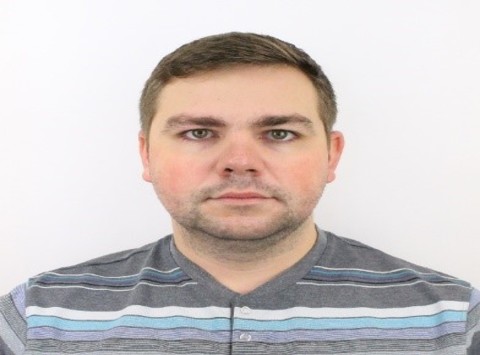
Dr. Aleksei Sergeevich Sedegov
Research Center of Functional Nanoceramics, NUST “MISIS” , Russia
Dr. Aleksei Sedegov received his bachelor's degree from the South-Russian State Polytechnic University NPI (Novocherkassk, Russia) with a specialization in mechanical engineering, then a master's degree at National University of Science and Technology MISIS (Moscow, Russia) specializing in powder metallurgy, and even then, he began to study the production of pseudo-alloy by the method of mechanical alloying based on the Copper-Chromium system. Alexey is currently a student of the final postgraduate course at NUST MISIS, and is engaged in research in the field of combustion synthesis and mechanical alloying of high-entropy materials. He is also a leading engineer in the research center of "Functional Nanomaterials", where he conducts his scientific work.
This study shows the fundamental possibility of synthesizing high-entropy ceramic materials. As a result, a bulk sample of nitride and boride carbides was successfully synthesized and obtained.
A principal feature of the study is the production of ceramics by the method of self-propagating high-temperature synthesis (SHS). This method makes it possible to synthesize refractory ceramic materials without significant energy and labor costs. The basis for the synthesis of high-entropy ceramics was the 5-component alloy HfTaTiNbZr, which belongs to the class of refractory materials. This alloy was prepared by mechanical treatment in a planetary ball mill. As a result of optimization of the ball milling process, the modes were determined, in which the final product is a nano-layered powder composite. A feature of this powder is the further possibility of preparing reaction mixtures for SHS. Powders of high-entropy ceramics sintered by spark plasma sintering are single-phase samples of materials (according to XRD results). Spent SEM analysis also confirms that the ceramic consists essentially of one phase with uniformly distributed elements in the bulk material. Studies have such characteristics as oxidation resistance, mechanical properties and thermal conductivity showed the effect of increasing the entropy of materials to improve the properties.
Scientific Session Speaker
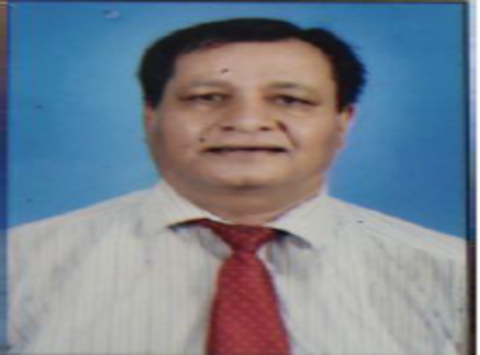
Prof. Farid Khan
Dr. HariSingh Gour Central University, Sagar, India
Prof. Farid Khan obtained his B.Sc. M.Sc. and Ph.D. degrees from Dr. HariSingh Gour Central University, Sagar, India. He has been working on Nanoporous materials of coinage and transition metals using ionic and non-ionic surfactants and also nanocomposites of polysaccharides modified by different nanomaterials then crosslinked with di or trivalent cations. He is the recipient of Commonwealth Academic Staff Award fellowship in 2008 -09 in University of Bristol, UK. He has published 150 research papers in journal of repute and successfully guided 20 Ph.D. students.
Polysaccharides based nanocomposites are the most important materials used for sensors, targeted drug delivery, tissue engineering and bound heeling. Alginates, Carboxymethycellulose, Chitogen, Pectin, Cellulose and so on are the most suitable materials can be crosslinked with di or trivalent cations or anions. Such materials are non-toxic, economically viable, easily available and environmentally benign. Worldwide, industrial development increases the toxic metals such as As, Hg, Cd and Cr in soil and ground water. Amongst these metals, Cr(VI) is emerged as the most hazardous metal to living things. The excess amount of Cr(VI) generated by electroplating, leather tanning, metal policing, pigment industry, cooling tower, steel manufacturing and photography causes severe problem in kidney, liver, vomiting, diarrhea and skin disorder. Several methods are available for the removal of Cr(VI) including adsorption, bio-sorption, electro coagulation, ion exchange, filtration and photocatalytic reduction. Herein, electrochemical method is used to determine Cr(VI) using Alginate(alg.)/Carboxymethylcellulose(CMC)/Dextran(Dex.)/MnO2/g-C3N4/Ca with detection limit of 0.63 ng/mL which is the lowest limit reported so far. The UV-Vis. Spectroscopy is used to reduce Cr(VI) to Cr(III) in presence of NaBH4 just in 26 .63 s without using H2SO4 which is toxic and the reaction kinetic become uncontrolled when H2SO4 is used.
References
1. M. Bano, I. Khan, D. Ahirwar and F. Khan, Reactive and Functional Polymer, 2020, 150, 1045-
2. D. Ahirwar, M. Bano, I. Khan, S. S. Gound, M.U. Sheikh, R. Mondal and F. Khan, J. Solid State Chem, 2019, 273,233-242.
3. I. Khan, M. Bano, G. A. Khan, and F. Khan, Mater. Sci. & Engin, B, 2018—238-239, 83-92.
4. M. Thomas,M. U. sheikh, D. Ahirwar, M. Bano, and F. Khan, J. Colloids and Interface Science, 2017, 505, 115-129.
5. G. A. Naikoo, R. A. Dar, and F. Khan, J. Mater. Chem. A, 2014, 2, 11792-11798.
Scientific Session Speaker
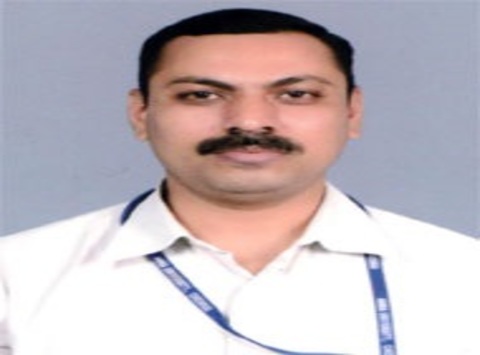
Dr. Anand Kumar S
Anna University Chennai, India
Dr.S.Ananda Kumar has completed PhD from Anna University and subsequently did postdoctoral studies from De-Mont Fort University, UK and Institute of Polymer Composites of University of Minho Portugal. I was awarded Erasmus Mundus Fellowship to Visit Italy in 2010. I served as the Assistant Director of Centre for Entrepreneur Development (Overall activities), Anna University a premier organization. I have published more than 50 papers in reputed journals and have contributed eight book chapters for international publishers like CRC (USA), Apple Academic Press (USA), Wiley (Germany) and have also served as an editor for the book "Eco-friendly Nano-Hybrid Materials for Advanced Engineering Applications”. Presently I serve as Editorial executive in Science Progress Journal by SAGE Publishers. I have completed several national and international projects funded by DST, DRDO and Anna University. I received "Active Researcher Award for the year 2014 from His Excellency (Late) Dr. A P J Kalam for my outstanding contribution in nano-hybrid coatings and composites.
Background: Over the last 25 years, the progress of understanding breast cancer better as a disease and its treatment has been improving drastically. Treatment is more individualized, based on disease characteristics, stage, and patient preference. Hence the development of biocompatible scaffolds for controlled and personalized drug delivery is mandatory to solve this problem. They can be prepared as biodegradable scaffolds, that consist of a polymeric matrix reinforced with a polymer blend. Biopolymers are naturally occurring polymers derived from renewable resources are available for material applications. In this study we 3D printed a bio scaffold using a mixture of PLA-1,3-β-Glucan-Spirulina. This biotechnologically derived polymer has numerous applications in medical, packaging and fillers sector. PLA is material of choice for most of the additive manufacturing technology. 1,3-β-Glucans are in a state of enormous significance due to their dual structure forming agents and pharmacological substances, and research is especially focused on the application of these polymers in scaffold and drug delivery.
Objective: To screen soil from different locations that contain useful microorganisms producing bacterial polysaccharides which are used as a Biopolymer and downstream the obtained polysaccharides and 3D print a scaffold for breast cancer applications
Methods:
Soil samples from 4 different locations was isolated- Marine beech dry soil, Marine beech wet soil, Coovum river soil and Agriculture land soil were collected from Chennai, Tamil Nadu
In order to isolate the bacteria that was capable of producing a biopolymer from soil various parameters were assessed such as morphological, biochemical, physiological, and genetic characteristics were studied. The identification of bacteria was based on morphological characteristics and biochemical tests carried out on the isolates. Morphological characteristics observed for each bacteria colony after 24 h of growth included colony appearance; shape, elevation, edge, optical characteristics, consistency, colony surface and pigmentation. Biochemical characterizations were done according to the method of Bergey’s manual of systematic bacteriology. Next down streaming of the obtained culture was done and yield was obtained. It was 3D printed using Fused deposition modelling and obtained as a scaffold.
Results:
Biopolymers have the technical potential to replace engineering plastics, and could be a major new line of development for the plastic sector. Biopolymers may constitute no more than a niche, but the market’s interest in them is constantly growing and are a promising field. The Soil samples of Coovum soil (CS) and Agricultural soil (AS) of concentrations 10-1, 10-2, 10-3, 10-4 produced blue colonies upon isolation which was identified as a Biopolymer, a Bacterial polysaccharide consisting of Beta 1,3 glucan linkages belonging to the Enterococcus family. The most promising developments of bacteria producing beta 1,3 glucans seem possible in therapeutic and cosmetic applications as these compounds have been described as immunomodulators, antitumorogenic, antiviral (AIDS), agents for treatment of hypercholesterolemia and agents for stabilisation of glycemia. The down streaming was done in order to increase the yield of the biopolymer. The Production medium was further centrifuged at 10,000 rpm to harvest the pellets. The Total yield of the biopolymer (ß 1,3 glucan) was 6g/l. The contact angle test of Raw PLA is 47.4°C depiciting its hydrophilic nature of the biopolymer. The polymeric blend of PLA-Betaglucan-Spirulina biopolymer shows 117.4°C. As the contact angle increases, the hydrophobic nature also increases. These data indicate that the hydrophobicity of the biomaterial is, most likely, an important design criterion for polymeric scaffolds, which should promote the healing of defects. Furthermore, it is argued that stable, non-degrading porous biomaterials, like those used in this study, provide an important tool to expand our comprehension of the role of biomaterials in scaffold-based tissue engineering approaches
Conclusion: Biopolymers have the technical potential to replace engineering plastics, and could be a major new line of development for the plastic sector. Biopolymers may constitute no more than a niche, but the market’s interest in them is constantly growing and are a promising field. A vast number of biopolymers have been synthesized and developed, offering a wide range of properties.
Soil microorganisms play an essential role in various cycles of chemical and biochemical reactions. Microorganisms produce extra-cellular bacterial polysaccharides that of useful for human applications in various sectors like drug delivery, wound healing, food industry, packaging, cryogels, fillers etc.
Microorganisms produce them to form a barrier resistant to drying and attack by amoebae, bacteriophages and leukocytes and also attachment to plants and animals. The association of soil to make bulk is due to microbial polysaccharides. Soil samples of Coovum soil (CS) and Agricultural soil (AS) of concentrations 10-1, 10-2, 10-3, 10-4 produced blue colonies upon isolation which was identified as a Biopolymer, a Bacterial polysaccharide consisting of Beta 1,3 glucan linkages belonging to the Enterococcus family. They were further down streamed and feed were increased to find its application in 3D printing. Upon mixing with other biopolymers like PLA and spirulina, a polymeric blend suitable for scaffolding was obtained. The literature simultaneously characterizes and identifies the pharmacological effects two streams of research. First being the discovery of potential use of these polysaccharides in direct immunotherapeutic intervention for the treatment of cancers, healing of wounds, and impartation of microbial, fungal, and viral resistance, and the second being the use of the helical gel structure beginning with the creation of food gels and now growing deeper into the development of nanostructures and encapsulation and release of active therapeutics. Also, additive manufacturing or 3D printing has spearheaded a revolution in the biomedical sector allowing the rapid prototyping of medical devices. The applications of bacterial polysaccharide-based bio inks have the potential to act as a key battlefront in the war against antibiotic resistance. Owing to the above said reasons, an attempt was made in this study to 3D print the obtained bacterial polysaccharides with a Beta 1,3 glucan linkages. The data obtained from this study clearly reveals that this polymeric blend is suitable for constructing a scaffold for treating cancer ailments.
Scientific Session Speaker
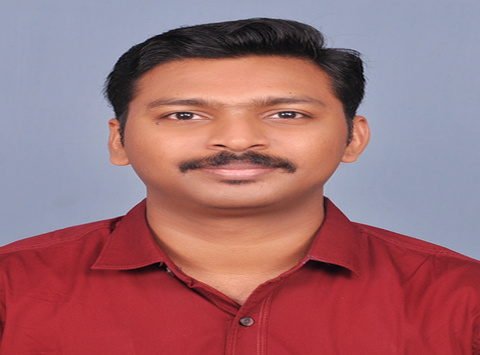
Dr. Midhun Dominic C D
Sacred Heart College, Thevara, India
Midhun Dominic currently works at the Department of Chemistry, Sacred Heart College, Cochin. Midhun does research in Green Chemistry, Materials Chemistry , nano composites, new gen fillers for rubber industry etc.Their current project is bio based fillers in rubber
Chitin Nanowhiskers Reinforced Acrylonitrile Butadiene Rubber: Processing and Performance Properties
Scientific Session Speaker

Dr. B. Kahouadji
Department of technology, University of Bejaia, Algeria
Dr. Kahouadji has a PhD in physics, option: physics of materials since April 2017, teacher researcher at A.Mira university of bejaia, faculty of technology. He is working on nanomaterials based on rare earth orthophosphates in collaboration with two laboratories: Laser Department/ Nuclear Research Centre of Algiers (CRNA), Vinča Institute of Nuclear Sciences, University of Belgrade
The work explores the enhancement of photoluminescence properties of nano-sized LuPO4:Pr3+ phosphor powders synthesized by sol gel process with incorporation of yttrium ions inside of this single matrix to obtain (Lu1-xYx)PO4:Pr3+ (x=10, 20, 30, 40, 50 at. %) powders. Under UV excitation at 270 nm the emission spectra of LuPO4:Pr3+ nanopowder do not present any characteristics emission band attributed to 4f15d1 à4f2 transitions of Pr3+ ions, while a large emission band has been observed which due to defects created in LuPO4 cell by doping considering the ionic radius of Pr3+ is larger compared to the ionic radius of Lu3+, this band extinguishes gradually at the time insertion of the Y3+ ions until its total disappearance (for x=40 at. %).It was found that the emission spectra of (Lu1-xYx)PO4:Pr3+ nanopowders under λex=230nm presents only the characteristics emission bands of Pr3+ ions with a remarkable influence of the rate of Y3+ ions on the intensity of this bands. Furthermore, it was observed that the improvement in the luminescence properties of (Lu1-xYx)PO4:Pr3+ nanopowders is very remarkable in visible range.
Keywords: (Lu1-xYx)PO4:Pr3+,photoluminescence enhancement, powders, nano-sized, sol gel.
Scientific Session Speaker
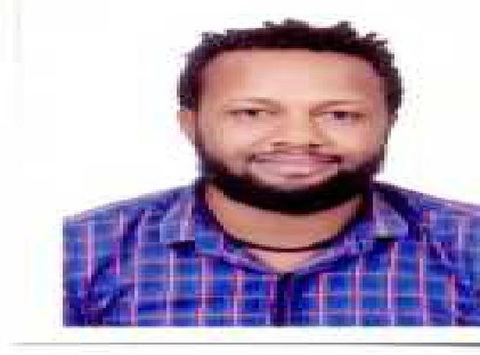
Dr. Yenealem yilma
Ethiopia biotechnology institute, Addis Ababa, Ethiopia
Yenealem Yilma young researcher has completed his Bachelor of Degree in Physics from homeland Bahirdar University on July 2007 and He served as coordinator of bureau forensic Science directorate laboratory expert and testimony department. He gotten different types of certificates in country and out of the country related with his profession. He also graduates master’s degree in Material Science from home land Hawassa University on July, 2015. Currently, he works as Associate Researcher ᴨ in Ethiopian Biotechnology Institute emerging center department of Material science. He has published more than 3 papers in the country and international journal. Now he actively participating more than five projects on his institute.
In this comparative study, the effect of low density poly ethylene and ethylene vinyl acetate loading ratio by melt blending with additives and without additives on mechanical properties for prosthetic and orthotic application was analyzed. To carry out this thermoplastic materials such as low density poly ethylene (LDPE), Ethylene vinyl acetate (EVA), color pigment, calcium carbonate, titanium dioxide and black carbon have been used as raw material to produce the sample in sheet form and to achieve comfortable prosthetic and orthotic application. The method used were blending, molding, testing of produced materials. Increasing the content of EVA and decreasing content of LDPE had effect on compatibility, tensile strength and elongation at break vice versa. The blended composite with additives have no significant effect on molding and without additive have significant effect on molding due to molecular mobility which leads shrinkage. The maximum tensile strength reached to 10.5Mpa and minimum tensile strength reached 2.8Mpa and the maximum elongation at break reached 469.8% and minimum elongation at break 40.2%.The other result are in between of these ranges, which have better than existing one has maximum tensile strength of 2.3Mpa and elongation at break have 265%.The mean value of maximum tear load is 74.4N/mm and minimum tear load have 38.9N/mm which have better result than existing one has 10.5N/mm. Scanning electron microscope(SEM) test result showed that specimen with more filler and less content of EVA become poor in its morphology and compatibility.
Keywords: prosthetic, orthotic, ethylene vinyl acetate, low density poly ethylene
Scientific Session Speaker

Dr. Maria Jose Lavorante
Del Instituto de Investigaciones Científicas y Técnicas para la Defensa, Argentina
María José Lavorante is the Head Professor of Organic Chemistry at the Engineering University Escuela Superior Técnica Grl Manuel N Savio. She is an active Researcher of the Scientific and Technical Research and Development Institute for Defense, Argentina. She has participated in several international congresses of materials, renewable energy and PEM fuel cells. She is pursuing PhD in relation to alkaline water electrolyzers. She has published more than 10 papers in reputed journals over the last 3 years and has been serving as an Editorial Board Member.
Electrodes for alkaline water electrolyzers: chemical and/or mechanical modification of its active surface.
Scientific Session Speaker

Dr. Amodini Mishra
Indian Institute of Technology Kanpur, India
Ms. Amodini Mishra did undergraduate and postgraduate in Physics from C.S.J.M University Kanpur and M. Phil. from Dr. B.R.A University Agra India. After that She has been fulfilled a research experience from DRDO project and work carried out at IIT Kharagpur. Currently she is a Ph.D. candidate in School of Physical Sciences at Jawaharlal Nehru University, India. She research interested in modification of two dimensional magnetic nanocomposites by swift heavy, low or high energy ion beam, synthesis of embedded semiconductor nanostructures by ion beam and synthesis or application of metal nanocluster as chemical and bio sensor. She published good research papers in referred SCI journals in the above mentioned research area and attended 30 international/national conferences for the same.
Here, we have synthesized cobalt oxide/ graphene oxide (Co3O4/GO) nanocomposites using co-precipitation synthesis process. Bare GO and Co3O4/GO nanocomposites have been characterized by spectroscopic and microscopic techniques. The crystalline nature of nanocomposites is confirmed by X-ray diffraction (XRD) study. The structural and morphological studies have been done using transmission electron microscopy (TEM) and scanning electron microscopy (SEM). The effect of magnetic nanoparticles (MNPs) on the Raman spectrum of GO sheets has been studied using Raman spectrometer. Decoration of MNPs causes enhancement in the Raman peaks of GO sheets. The enhancement has been explained in terms of charge transfer in the nanocomposites. The MTT assay reveals that the nanocomposites complete donates more biocompatible and effectiveness than GO sheets and Co3O4 nanoparticles individually, as anti-proliferative agent for cancer treatment.
Keywords: Graphene oxide, nanocomposite, Raman and MTT assay.
Scientific Session Speaker
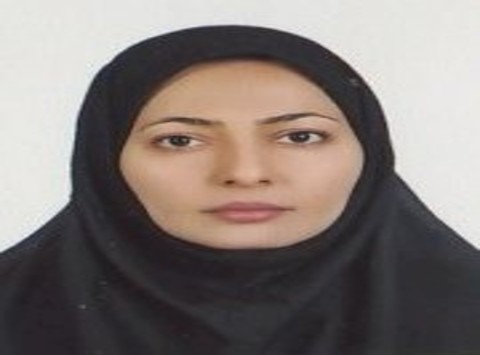
Dr. Hakimeh Zali
Shahid Beheshti University of Medical Sciences, Tehran
Understanding the cellular and molecular toxicity of graphene and its derivatives is essential for their biomedical applications. Herein, gene expression profile of graphene-exposed cells was retrieved from the GEO database. Differentially expressed genes and their functional roles were then investigated through the pathway, protein-protein interaction network, and module analysis. High degree (hub) and high betweenness centrality (bottleneck) nodes were subsequently identified. The functional analysis of central genes indicated that these graphene-gene interactions could be of great value for further investigation. Accordingly, we also followed the expression of five hub-bottleneck genes in graphene-treated murine peritoneal macrophages and human breast cancer cell line by real-time PCR. The five hub-bottleneck genes related to graphene cytotoxicity; CDK1, CCNB1, PLK1, TOP2A, and CCNA2 were identified through network analysis, which were highly correlated with regulation of cell cycle processes. The module analysis indicated the cell cycle pathway to be the predominant one. Gene expression evaluation showed down-regulation of these genes in the macrophages and cancer cells treated with graphene. These results provided some new intuitions concerning the graphene-cell interactions and unveiled targeting critical cell cycle regulators. The present study indicated some toxic effects of graphene-based materials through systems toxicology assessment. Integrating gene expression and protein-protein interaction network may help explaining biological responses of graphene and lead to beneficial impacts in nanomedicine.
Keywords: Graphene; Systems toxicology; Cell cycle; Gene expression; Protein-protein interaction network, System biology
Scientific Session Speaker

Dr. Beya Ouertani
University of Carthage, Tunisia
Beya Ouertani obtained her Bachelor's Degrees in physical sciences, her DEA in quantum physics, and her PhD about thin films for solar cells, at the Faculty of Sciences of Tunis, El Manar University. She was a researcher at the Photovoltaic and Semiconductor Materials Laboratory, ENIT, Tunisia. She is a researcher at Laboratory of Semiconductors, Nanostructures and Advanced Technology, LSNTA, Research and Technology Center of Energy (CRTEn) since 2001, and researcher at the Research Laboratory for Environment Sciences and Technologies, LRSTE, High Institute of Sciences and Technologies of Environment Borj Cédria,. She is a teacher at the High Institute of Sciences and Technologies of Environment Borj Cédria, Science and Technology Park of Borj Cedria, Tunisia
Ru-alloyed pyrite thin films obtained by the spray pyrolysis technique and using low cost and non-toxic precursors , as novel materials for low cost solar cells
Scientific Session Speaker

Dr. Safa POLAT
Karabük University, Turkey
Until now, many reinforcements containing carbide and oxide have been used to further increase the low density and relatively high strength of magnesium and its alloys. However, it is thought that the effects of the reinforcements used for this purpose on the thermal expansion coefficient (CTE) of Mg and its alloys should be investigated and optimized. In this context, the proposed Kerner and Turner models for determining the theoretical CTE values of particle reinforced composites have been proven by experimental data. Therefore, it is assumed that easily accessible reinforcements such as TiC, WC, SiC, B4C carbides and TiO2, ZrO2, SiO2, Al2O3 oxides were reinforced into pure magnesium from 0.5% to 70% by volume in this study. In addition, it has been assumed that Mg2Si intermetallic may also be formed by reaction between Mg and some of these supplements during production. In addition, it has been assumed that Mg2Si reaction occurred between some of these supplements and Mg during the production and this intermetallic would constitute from 0.5% to 10% by volume of the total reinforcement. When it comes to the results obtained, firstly, which model is closer to the experimental one was investigated from the literature and it was concluded that it was Kerner. According to the Turner model, it was concluded that the lowest CTE value from carbides was provided by WC and by TiO2 from oxides. On the other hand, the lowest CTE value was obtained in SiC among carbides and ZrO2 among oxides based on the Kerner's model. It was concluded that intermetality contributed approximately 5% positively compared to the Kerner's model.
Keywords: Magnesium, carbides, oxides, intermetallics, thermal expansion coefficient, Kerner model, Turner model.

